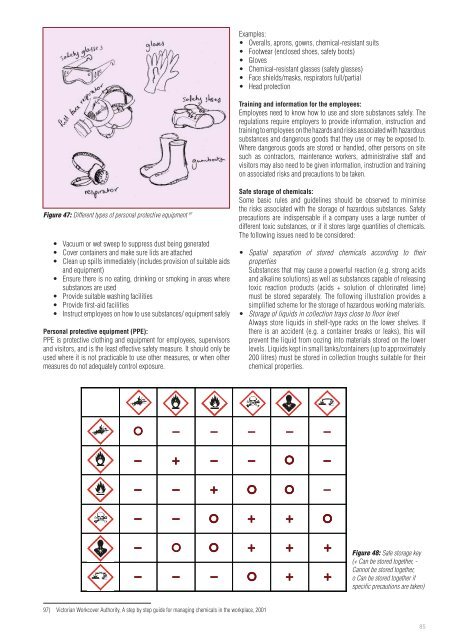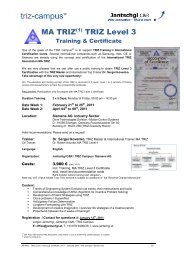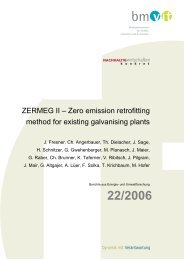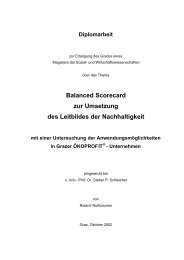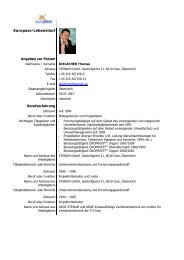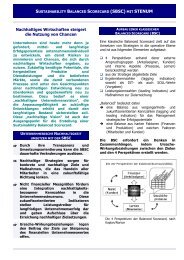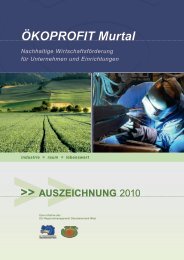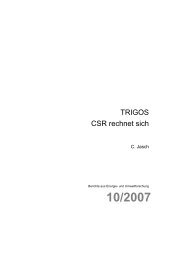Promoting Resource Efficiency in Small & Medium size ... - UNEP
Promoting Resource Efficiency in Small & Medium size ... - UNEP
Promoting Resource Efficiency in Small & Medium size ... - UNEP
You also want an ePaper? Increase the reach of your titles
YUMPU automatically turns print PDFs into web optimized ePapers that Google loves.
Examples:<br />
• Overalls, aprons, gowns, chemical-resistant suits<br />
• Footwear (enclosed shoes, safety boots)<br />
• Gloves<br />
• Chemical-resistant glasses (safety glasses)<br />
• Face shields/masks, respirators full/partial<br />
• Head protection<br />
Tra<strong>in</strong><strong>in</strong>g and <strong>in</strong>formation for the employees:<br />
Employees need to know how to use and store substances safely. The<br />
regulations require employers to provide <strong>in</strong>formation, <strong>in</strong>struction and<br />
tra<strong>in</strong><strong>in</strong>g to employees on the hazards and risks associated with hazardous<br />
substances and dangerous goods that they use or may be exposed to.<br />
Where dangerous goods are stored or handled, other persons on site<br />
such as contractors, ma<strong>in</strong>tenance workers, adm<strong>in</strong>istrative staff and<br />
visitors may also need to be given <strong>in</strong>formation, <strong>in</strong>struction and tra<strong>in</strong><strong>in</strong>g<br />
on associated risks and precautions to be taken.<br />
• Vacuum or wet sweep to suppress dust be<strong>in</strong>g generated<br />
• Cover conta<strong>in</strong>ers and make sure lids are attached<br />
• Clean up spills immediately (<strong>in</strong>cludes provision of suitable aids<br />
and equipment)<br />
• Ensure there is no eat<strong>in</strong>g, dr<strong>in</strong>k<strong>in</strong>g or smok<strong>in</strong>g <strong>in</strong> areas where<br />
substances are used<br />
• Provide suitable wash<strong>in</strong>g facilities<br />
• Provide first-aid facilities<br />
• Instruct employees on how to use substances/ equipment safely<br />
Personal protective equipment (PPE):<br />
PPE is protective cloth<strong>in</strong>g and equipment for employees, supervisors<br />
and visitors, and is the least effective safety measure. It should only be<br />
used where it is not practicable to use other measures, or when other<br />
measures do not adequately control exposure.<br />
Safe storage of chemicals:<br />
Some basic rules and guidel<strong>in</strong>es should be observed to m<strong>in</strong>imise<br />
the risks associated with the storage of hazardous substances. Safety<br />
precautions are <strong>in</strong>dispensable if a company uses a large number of<br />
different toxic substances, or if it stores large quantities of chemicals.<br />
The follow<strong>in</strong>g issues need to be considered:<br />
• Spatial separation of stored chemicals accord<strong>in</strong>g to their<br />
properties<br />
Substances that may cause a powerful reaction (e.g. strong acids<br />
and alkal<strong>in</strong>e solutions) as well as substances capable of releas<strong>in</strong>g<br />
toxic reaction products (acids + solution of chlor<strong>in</strong>ated lime)<br />
must be stored separately. The follow<strong>in</strong>g illustration provides a<br />
simplified scheme for the storage of hazardous work<strong>in</strong>g materials.<br />
• Storage of liquids <strong>in</strong> collection trays close to floor level<br />
Always store liquids <strong>in</strong> shelf-type racks on the lower shelves. If<br />
there is an accident (e.g. a conta<strong>in</strong>er breaks or leaks), this will<br />
prevent the liquid from ooz<strong>in</strong>g <strong>in</strong>to materials stored on the lower<br />
levels. Liquids kept <strong>in</strong> small tanks/conta<strong>in</strong>ers (up to approximately<br />
200 litres) must be stored <strong>in</strong> collection troughs suitable for their<br />
chemical properties.<br />
◦ –<br />
–<br />
–<br />
– –<br />
–<br />
+<br />
–<br />
–<br />
◦<br />
–<br />
–<br />
–<br />
+<br />
◦<br />
◦ –<br />
–<br />
–<br />
◦<br />
+<br />
+<br />
◦<br />
–<br />
–<br />
Figure 47: Different types of personal protective equipment 97 +<br />
◦<br />
◦<br />
+<br />
–<br />
–<br />
+<br />
◦ +<br />
+<br />
+<br />
Figure 48: Safe storage key<br />
(+ Can be stored together, -<br />
Cannot be stored together,<br />
o Can be stored together if<br />
specific precautions are taken)<br />
97) Victorian Workcover Authority, A step by step guide for manag<strong>in</strong>g chemicals <strong>in</strong> the workplace, 2001<br />
85


